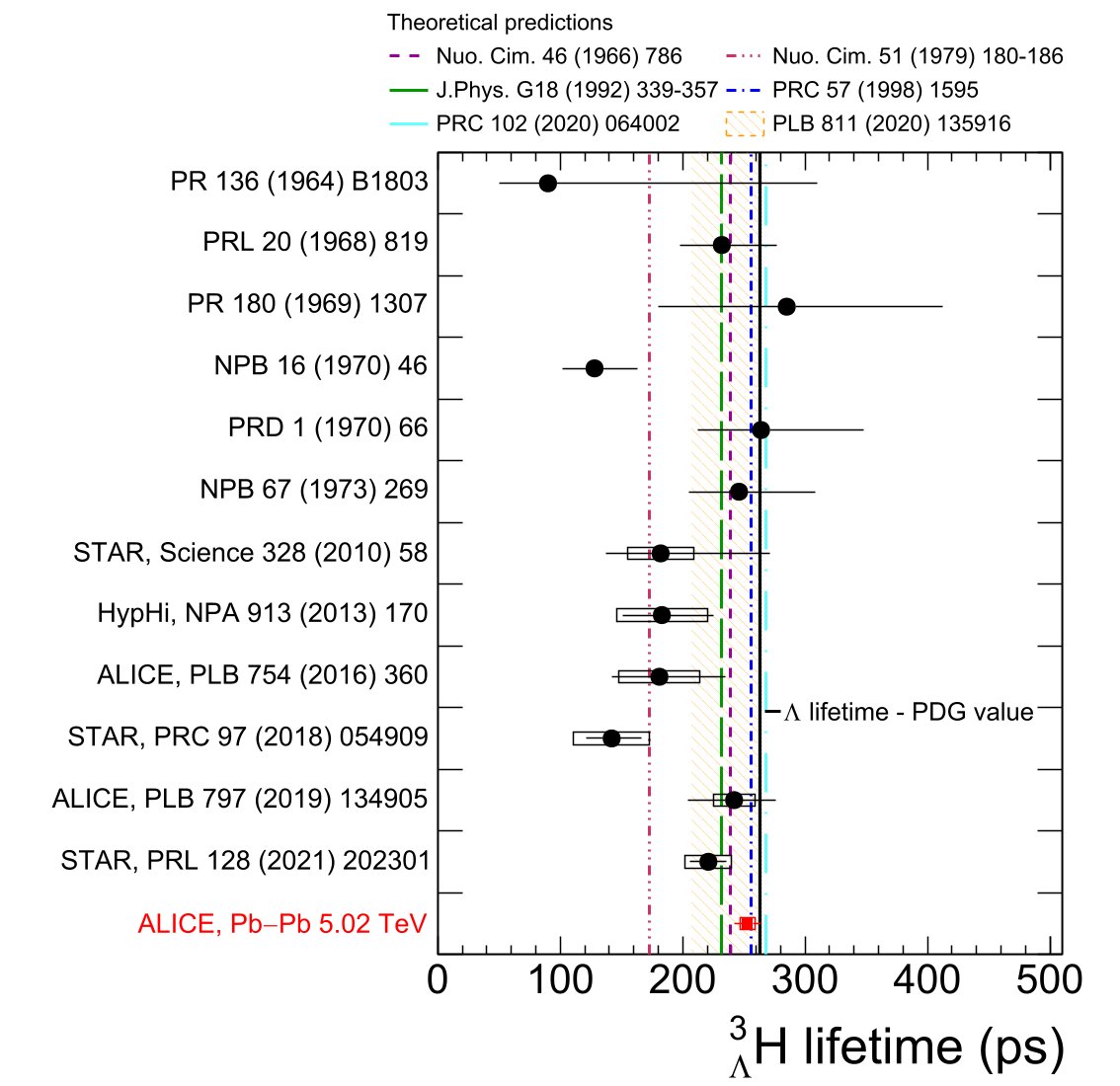The international ALICE collaboration at the Large Hadron Collider (LHC) has just released the most precise measurements to date of two properties of a hypernucleus that can provide valuable insight into what the cores of neutron stars could be like.
Atomic nuclei and their antimatter counterparts, known as antinuclei, are frequently produced at the LHC in high-energy collisions between heavy ions or protons. On a less frequent but still regular basis, unstable nuclei called hypernuclei are also formed. In contrast to normal nuclei, which comprise just protons and neutrons (that is, nucleons), hypernuclei are also made up of hyperons – unstable particles containing quarks of the strange type.
Almost 70 years since they were first observed in cosmic rays, hypernuclei continue to fascinate physicists because they are rarely produced in the natural world and, although they are traditionally made and studied in low-energy nuclear-physics experiments, it’s extremely challenging to measure their properties.
At the LHC, hypernuclei are created in significant quantities in heavy-ion collisions, but the only hypernucleus observed at the collider so far is the lightest hypernucleus, the hypertriton, which is composed of a proton, a neutron and a Lambda – a hyperon containing one strange quark.
In their new study, the ALICE team examined a sample of about one thousand hypertritons produced in lead–lead collisions that occurred in the LHC during its second run. Once formed in these collisions, the hypertritons fly for a few centimetres inside the ALICE experiment before decaying into two particles, a helium-3 nucleus and a charged pion, which the ALICE detectors can catch and identify. The ALICE team investigated these daughter particles and the tracks they leave in the detectors.
By analysing this sample of hypertritons, one of the largest available for these “strange” nuclei, the ALICE researchers were able to obtain the most precise measurements yet of two of the hypertriton’s properties: its lifetime (how long it takes to decay) and the energy required to separate its hyperon, the Lambda, from the remaining constituents.
These two properties are fundamental to understanding the internal structure of this hypernucleus and, as a consequence, the nature of the strong force that binds nucleons and hyperons together. The study of this force is not only interesting in its own right but can also offer valuable insight into the particle interactions that may take place in the inner cores of neutron stars. These cores, which are very dense, are predicted to favour the creation of hyperons over purely nucleonic matter.

The new ALICE measurements indicate that the interaction between the hypertriton’s hyperon and its two nucleons is extremely weak: the Lambda separation energy is just a few tens of kiloelectronvolts, similar to the energy of X-rays used in medical imaging, and the hypertriton’s lifetime is compatible with that of the free Lambda.
In addition, since matter and antimatter are produced in nearly equal amounts at the LHC, the ALICE collaboration was also able to study antihypertritons and determine their lifetime. The team found that, within the experimental uncertainty of the measurements, antihypertriton and hypertriton have the same lifetime. Finding even a slight difference between the two lifetimes could signal the breaking of a fundamental symmetry of nature, CPT symmetry.
With data from the third run of the LHC, which started in earnest this July, ALICE will not only further investigate the properties of the hypetriton but will also extend its studies to include heavier hypernuclei.

